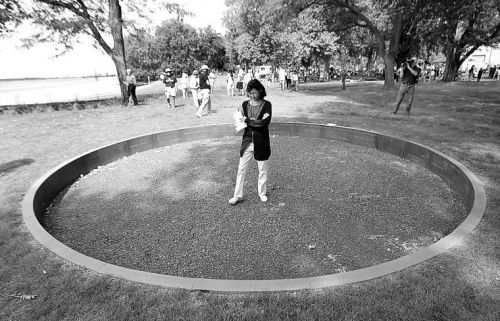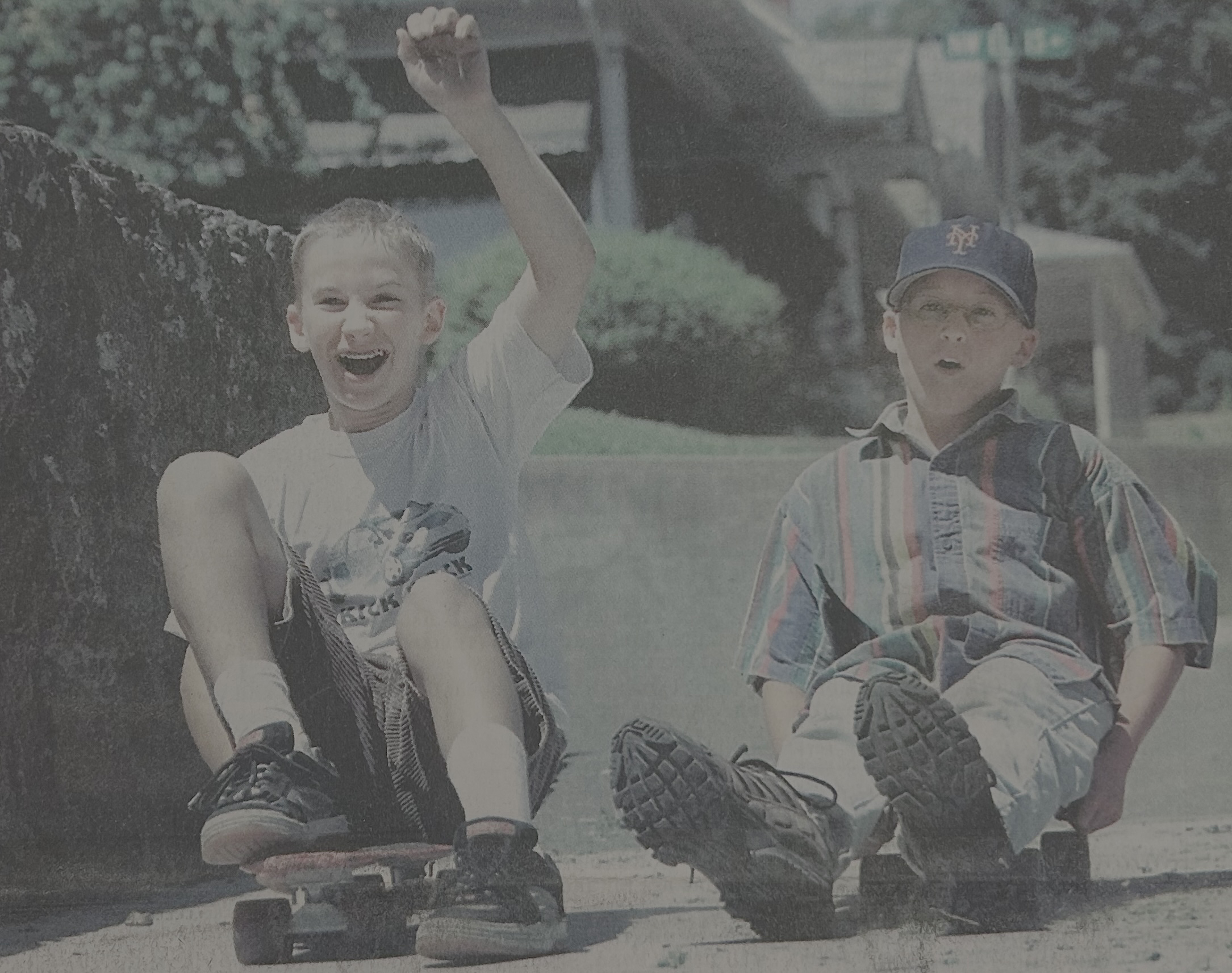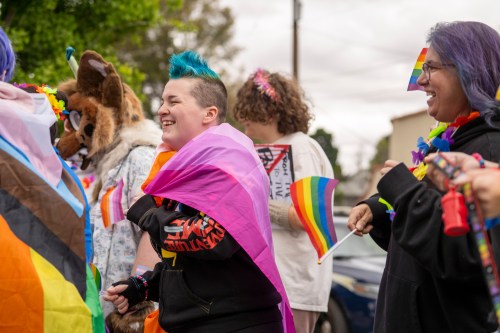Artist’s ‘Story Circles’ honor Lewis and Clark expedition, tribal history
Published 3:12 pm Thursday, September 2, 2010

- A few hundred people gathered Friday at Sacajawea State Park in Pasco for a dedication ceremony celebrating the completion of the seven Story Circles by renowned artist Maya Lin, seen here looking at the writings on one of the circles. Story Circles is meant to commemorate the region's tribal history and the Lewis and Clark Expedition. The story circles cost around $1.6 million and are the fourth of seven projects planned along the Lewis and Clark trail. The $30 million bicentennial project was started in 2000.
PASCO – Drums and Native American prayers once again echoed through the trees at the confluence of the Columbia and Snake rivers in Pasco.
Members of area tribes performed a seven drums blessing as Story Circles was dedicated in Sacajawea State Park on Friday.
The $1.6 million artwork, designed by world-renowned artist Maya Lin, is part of the $30 million Confluence Project to commemorate the Lewis and Clark expedition and the region’s tribal history.
The seven engraved basalt story circles, which range from 12 to 20 feet in diameter, mark where Capts. Meriwether Lewis and William Clark spent three days in 1805.
Lin told the hundreds of people who attended the dedication ceremony Friday that Lewis and Clark’s journals gave a description of what the area was like 200 years ago. The text and writing is where the story circles began, Lin said.
The story circles are a chance to reveal a deeper history of the place that Lewis and Clark didn’t see, said Lin, who also designed the Washington, D.C., Vietnam Memorial.
Lin encouraged people to look at the story circles and stand inside the ones sunken into the landscaping.
“There is no real order,” she said. “You wander through. Discover this place.”
The three raised circles highlight traded goods, salmon and welcome. The four sunken circles have themes of seasons, longhouse/tribal, story-of-the-river and myth-of-the-coyote.
The Lewis and Clark bicentennial project is the fourth of seven to be completed at sites along the Lewis and Clark trail in Washington and Oregon.
For more than 10,000 years, the confluence of the Columbia and Snake rivers was a place tribes migrated to, said Bobbie Conner of the Confederated Tribes of the Umatilla Indian Reservation.
It was where they harvested and processed important foods, where they were married and where the bones of their ancestors are, she said.
“We said our ancient prayers and songs here,” said Conner, executive director of the Pendleton-based Tamstslikt Cultural Institute.
The longhouse/tribal basalt circle has the inscribed names of the tribes who once called the place home – Walla Walla, Nez Perce, Cayuse, Palouse, Palus, Wanapam, Yakama and Umatilla.
The tribes were prepared for the gadgets the expedition brought, Conner said. But they weren’t prepared for the results of the maps the expedition made.
Missionaries and settlers followed Lewis and Clark’s trail, said Antone Minthorn, chairman of the Confluence Project and member of the Confederated Tribes of the Umatilla Indian Reservation. They claimed Native American land. There were wars.
The tribes were forced onto reservations and land that they had used was declared surplus by the U.S. government, he said.
But the tribes have preserved their culture, Minthorn said. And the 1975 Indian Self-Determination and Education Assistance Act recognized the tribes’ rights to govern themselves and direct the Bureau of Indian Affairs programs.
The tribes now have their own constitution and government complex and a thriving economy that includes a casino, hotel, business park and Cayuse Technologies, he said.
The Confederated Tribes had 1,200 members in 1970 and now have 2,800 and still are growing, Minthorn said.
“We are not a vanishing race,” he said.
Kris Watkins, president and CEO of the Tri-Cities Visitor and Convention Bureau, said the circles enhance the natural beauty of a truly historic site.
The circles seem to hide in the grass at Sacajawea State Park, with four of them sunken into the ground, with gravel on the bottom, and three of them raised with grasses planted inside.
The story circles link people with their neighbors and ancestors, said Rebecca Francik, Pasco mayor pro tem.
“Confluence is the coming together of two or more peoples,” she said.
John Mendoza, stone artist and owner of Hell’s Canyon Rock in Lewiston, Idaho, made the basalt circles installed in the park.
The salmon circle has the names in English and Columbia River Sahaptin of salmon that migrated up the Columbia and Snake rivers. Lin said by 2008, all of the species were listed as endangered in one or both of the rivers, including bull trout, steelhead and chinook salmon.
Sahaptin is a Native American language, and one of three spoken in the area when Lewis and Clark visited, Conner said.
Rachel Bauman, 10, of Richland, said she liked the look of the circles. Some of the information was familiar from her studies of area tribes.
Now, tribal members can bring their children to the park and show them their history within the story circles, Conner said.
“Our history is still being carved into river rock,” she said.





